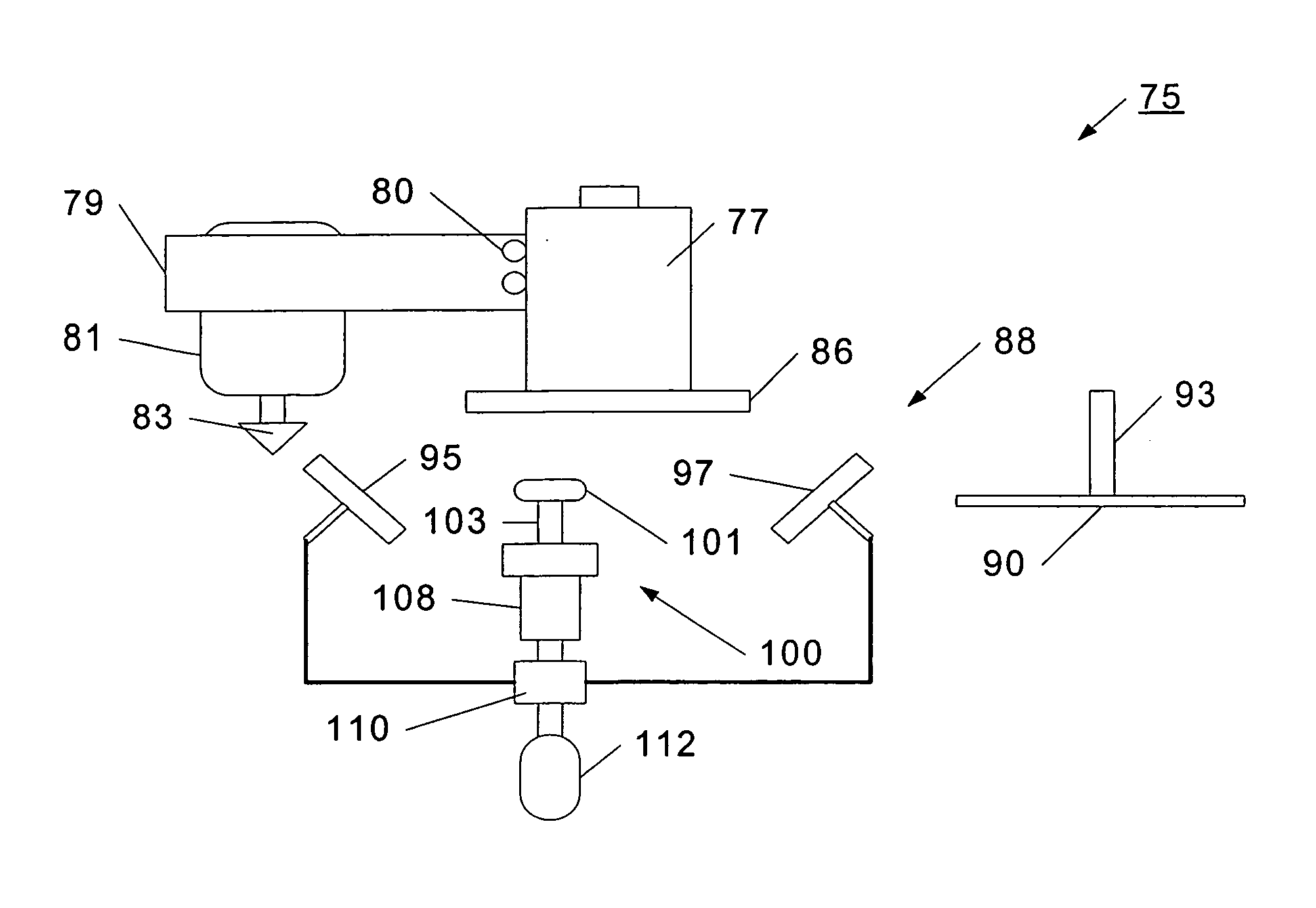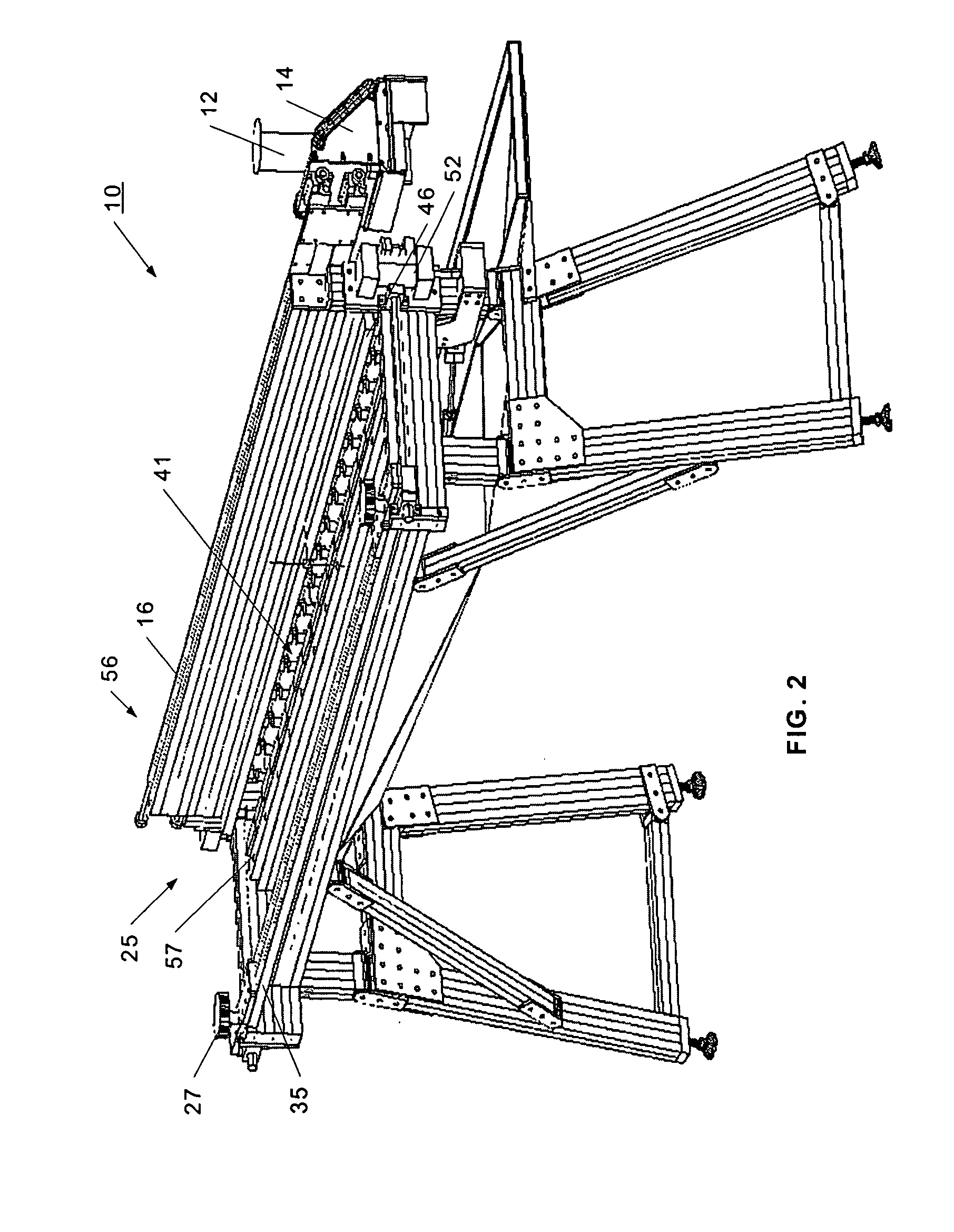Apparatus and method for edging stone or stone tiles
a technology of stone tiles and edging, which is applied in the field of mechanical stone machines, can solve the problems of high labor intensity, high labor intensity, and difficulty in edging stone or stone tiles, and achieve the effects of accurate alignment of the top surface of stones, stable and accurate positioning, and efficient and consistent cutting, grinding or polishing of stones
- Summary
- Abstract
- Description
- Claims
- Application Information
AI Technical Summary
Benefits of technology
Problems solved by technology
Method used
Image
Examples
Embodiment Construction
[0026] Certain embodiments of the invention are described below in connection with the drawings. It should be understood that the invention is not limited by the detailed description and the drawings, but is to be defined by the scope of the appended claims.
[0027] Referring now to FIGS. 1 and 2, a stone machine 10 is illustrated. Stone machine 10 may advantageously operate on a stone or a set of stone tiles. The stone or stone tiles may be for example, granite, marble, travertine, limestone, or other commercial or residential stone material. It will also be understood that stone machine 10 will advantageously work the edge of a stone block or stone slab. Stone machine 10 is generally illustrated to be about 6 feet in length, thereby able to hold up to about five or six 12″×12″ stone tiles. It will be appreciated that smaller or larger tiles may be used. It will also be appreciated that stone machine 10 may be constructed on a larger or smaller scale. For example, a smaller version ...
PUM
| Property | Measurement | Unit |
|---|---|---|
| length | aaaaa | aaaaa |
| sizes | aaaaa | aaaaa |
| sizes | aaaaa | aaaaa |
Abstract
Description
Claims
Application Information
 Login to View More
Login to View More - R&D
- Intellectual Property
- Life Sciences
- Materials
- Tech Scout
- Unparalleled Data Quality
- Higher Quality Content
- 60% Fewer Hallucinations
Browse by: Latest US Patents, China's latest patents, Technical Efficacy Thesaurus, Application Domain, Technology Topic, Popular Technical Reports.
© 2025 PatSnap. All rights reserved.Legal|Privacy policy|Modern Slavery Act Transparency Statement|Sitemap|About US| Contact US: help@patsnap.com



